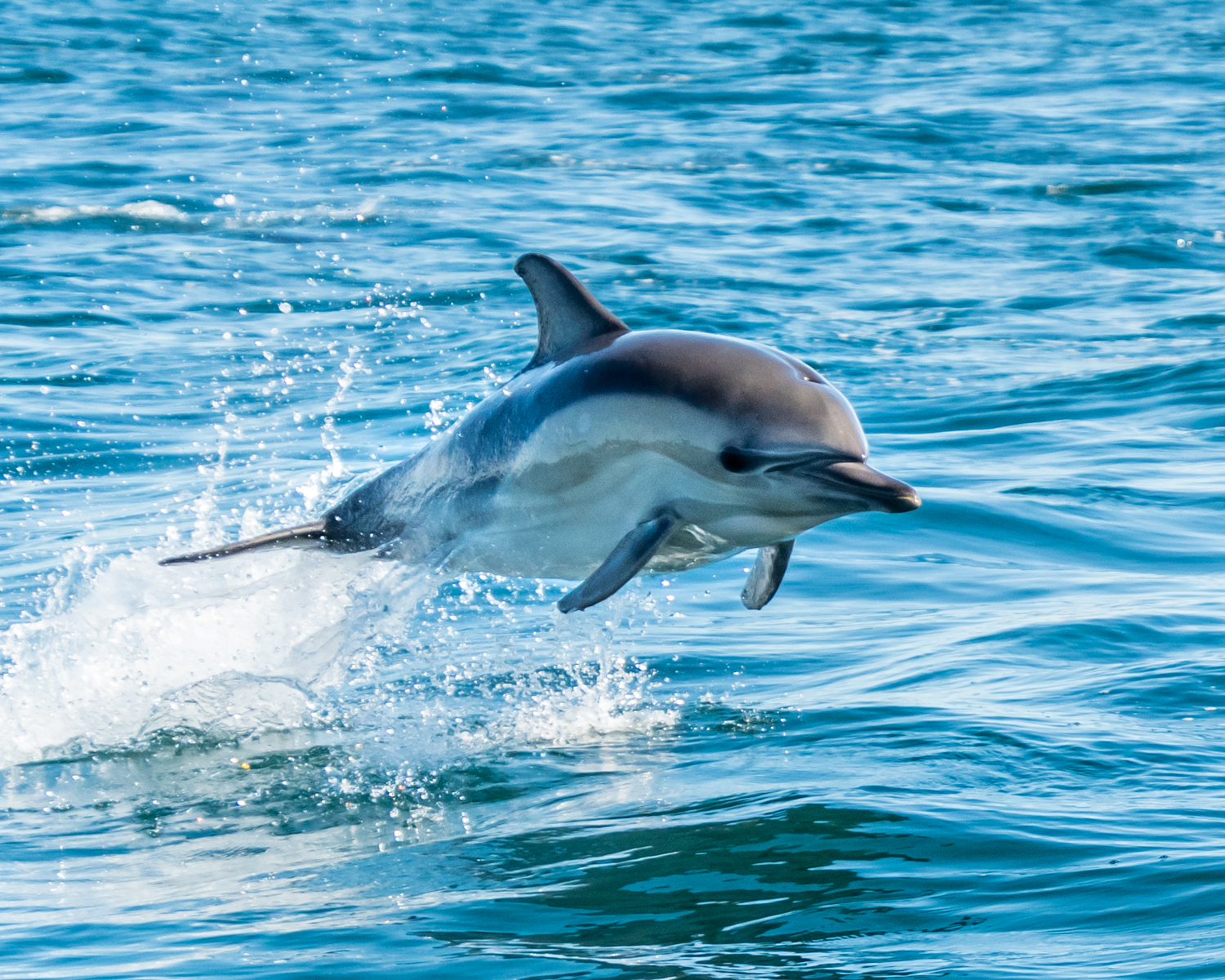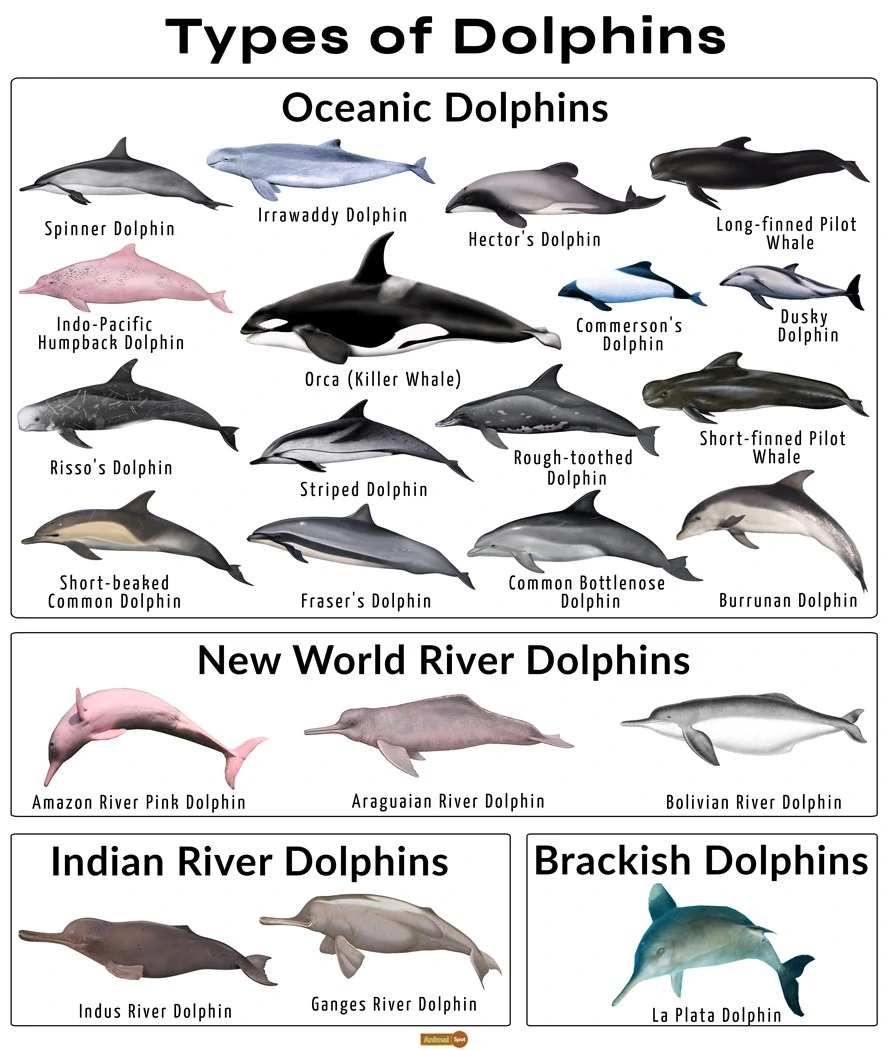Dolphin Facts You Didn't Learn About Their Adaptations for Survival
Dolphin Facts You Didn't Learn About Their Adaptations for Survival
Blog Article
Unveiling Dolphin Details: Nature's Intelligent Marine Mammals
Dolphins, commonly regarded as one of the ocean's most intelligent residents, display a fascinating selection of habits and social frameworks that necessitate closer assessment. With over 40 distinct varieties, these marine mammals not only show remarkable communication skills and complicated social communications but likewise possess innovative cognitive abilities that challenge our understanding of non-human intelligence.
Dolphin Species Diversity
Dolphins are a varied team of aquatic animals coming from the family members Delphinidae, which incorporates over 40 distinctive varieties. This family includes well-known species such as the common bottlenose dolphin (Tursiops truncatus), the orca or awesome whale (Orcinus orca), and the risso's dolphin (Grampus griseus) Each species shows one-of-a-kind physical features, habits, and adjustments that enable them to prosper in different marine environments.
Dolphin types vary dramatically in size, ranging from the little Maui's dolphin (Cephalorhynchus hectori) at approximately 1.2 meters to the orca, which can get to sizes of as much as 9 meters. Their coloration also varies, with some species presenting striking patterns that aid with camouflage or social signaling. In addition, dolphins live in varied habitats, from coastal regions and estuaries to the open ocean, showcasing their flexibility.
Research into dolphin types variety highlights the environmental value of these creatures, as they play essential functions in marine environments. Comprehending the various varieties is necessary for conservation efforts, as several encounter hazards from environment pollution, loss, and climate modification, necessitating targeted defense steps to guarantee their survival.
Social Frameworks and Habits
The complexity of dolphin types is mirrored in their elaborate social frameworks and habits. Dolphins are recognized for their extremely social nature, usually developing teams called shells, which can vary from a few individuals to over a hundred. These sheathings are typically composed of member of the family, showcasing a matrilineal framework where females play a main role in supporting and keeping social bonds offspring.

Additionally, some types of dolphins, such as orcas, show facility social actions that can include sub-pods or clans with distinctive social practices. These social structures are crucial for the survival and well-being of dolphin populaces, as they help with interaction, participation, and the transmission of expertise throughout generations. Comprehending these social dynamics is crucial for preservation initiatives and the security of their all-natural habitats.
Communication Methods
Among the numerous techniques of interaction, dolphins utilize an advanced array of interaction strategies that promote social cohesion and coordination within their shucks. These strategies incorporate vocalizations, body movement, and echolocation, each serving distinctive functions in their social communications.
Dolphins produce a broad range of clicks, whistles, and pulsed sounds, which function as their key vocal interaction. Each dolphin has an one-of-a-kind signature whistle, akin to a name, that enables individuals to recognize one another also in large teams. These articulations can communicate different messages, such as informing others to threat or working with group activities throughout searching.
Along with vocalizations, body movement plays an essential duty in dolphin interaction. Dolphin postures, such as jumping, rotating, or also refined shifts in positioning, share psychological states and intents. For instance, aggressive display screens may discourage rivals, while spirited habits can improve social bonds.
Echolocation, a biological sonar system, additional aids in navigating and searching. By giving off audio waves and analyzing the returning mirrors, dolphins can situate target and barriers successfully, showing their remarkable flexibility in complicated aquatic settings. Collectively, these interaction strategies highlight the complex social lives of dolphins, highlighting their intelligence in navigating their undersea world.

Knowledge and Trouble Solving
Acknowledged for their advanced communication skills, dolphins also show remarkable intelligence and analytic capabilities that even more improve their social interactions. Their cognitive abilities are confirmed by their ability to learn intricate tasks, understand abstract concepts, and adapt to various environmental difficulties. Research has actually revealed that dolphins can resolve intricate challenges, demonstrating not just their cognitive flexibility but also their capacity for preparation and insight.
Dolphins commonly involve in participating searching strategies, showcasing their capacity to work as a cohesive unit. This team effort needs innovative analytical abilities, as they need to evaluate their atmosphere, determine prospective target, and coordinate their actions to accomplish a common goal. Additionally, dolphins have actually been observed using tools, such as marine sponges, to protect their snouts while foraging on the ocean flooring, more exhibiting their ingenious problem-solving abilities.

Human-Dolphin Interactions
Human-dolphin communications have mesmerized lovers and scientists alike, highlighting the complex partnership in between these smart aquatic creatures and humans. From ancient times, dolphins have actually been portrayed in art and mythology, representing harmony and knowledge (Dolphin Facts). Modern interactions range from scientific research study and conservation initiatives to recreational tasks like dolphin seeing and swimming with dolphins
Research has actually shown that dolphins possess advanced social structures and communication abilities, which facilitate their communications with humans. These experiences typically cultivate emotional links, with many individuals reporting feelings of pleasure and empathy throughout such experiences. It is vital to come close to these communications with caution, as human activities can interrupt dolphin habits and habitats.
Preservation initiatives increasingly concentrate on promoting responsible interactions, making you could check here sure that human Check Out Your URL excitement does not compromise dolphin well-being. Education programs aim to raise awareness about the environmental significance of dolphins, stressing the need for sustainable methods.
Verdict
In recap, dolphins exemplify remarkable intelligence and versatility within varied aquatic atmospheres. Proceeded study and recognition are important for cultivating a deeper understanding of dolphins and promoting their well-being in an increasingly intimidated ecological community.
Dolphin varieties differ dramatically in size, varying from the small Maui's dolphin (Cephalorhynchus hectori) at around 1.2 meters to the orca, which can get to lengths of up to 9 meters. Dolphins show a selection of social communications, consisting of brushing and physical contact, which serve to check my site enhance relationships and develop power structures.
Identified for their sophisticated communication skills, dolphins likewise exhibit remarkable intelligence and problem-solving capacities that even more boost their social communications. Modern interactions range from scientific study and conservation efforts to recreational activities like dolphin swimming and seeing with dolphins.
Research study has actually shown that dolphins have advanced social frameworks and interaction skills, which facilitate their interactions with humans.
Report this page